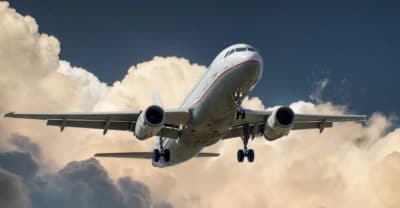If there’s one thing that never fails to make people sit up, pay attention, and finally work together, it has to be air travel and safety. In 1983, President Reagan opened up GPS for civilian use after the Korean Air Lines Flight 007 was shot down when it strayed into Soviet airspace. Then, in 2000, GPS accuracy was increased as President Clinton ended Selective Availability. Now, it looks like the aviation community may get yet another tech bump in the near future.
According to the Wall Street Journal, the United States and the European Union have agreed to work together to allow aircraft to access both GPS and the yet-unfinished Galileo signals, providing better and more accurate navigational information. With this initiative, each system would be working as a backup for the other, providing more protection against hacking, jamming, spoofing, and other similar threats.
“It would make the entire global navigational satellite system more robust,” George Liger, one of the U.S. technical experts leading the project, said in an interview in Washington last week.
Formal plans have been outlined to allow airliners, business jets, and even private plans process and utilize signals from both constellations simultaneously, but it’s definitely not going to happen overnight. Due to technological hurdles, it’s expected that receivers capable of acquiring and understanding both signals at the same time wouldn’t be available or widely implemented until 2025 or even 2027. To date, there is no technology certified to be used for aircraft which can utilize both signals simultaneously. According to WSJ, the U.S. panel has called for final approval of minimum operational standards for both Galileo and GPS by 2022. The Galileo constellation, which entered its first phase of operability earlier this month, is expected to be completed by 2020.
Currently, there are no such agreements with Russia and China, who also are working on satellite navigation systems. Although the two countries are reportedly working together, they have not been willing to divulge technical data to the United States in order to work towards compatibility. With the competitive nature of satellite navigation, and the possible military use this is hardly surprising.
Regardless, this is a huge step towards pinpoint accuracy in the satellite navigational world, and it’s extremely exciting. Once Galileo is completed, it is expected to have more than twice the accuracy of current GPS signals, and the additional satellites could act as an automatic check against spoofing to provide something of a safety net for airliners. Industry experts speculate that widespread adoption of this up-and-coming technology could take a half dozen years or more after it is available.
To read more, check out the WSJ article here.

